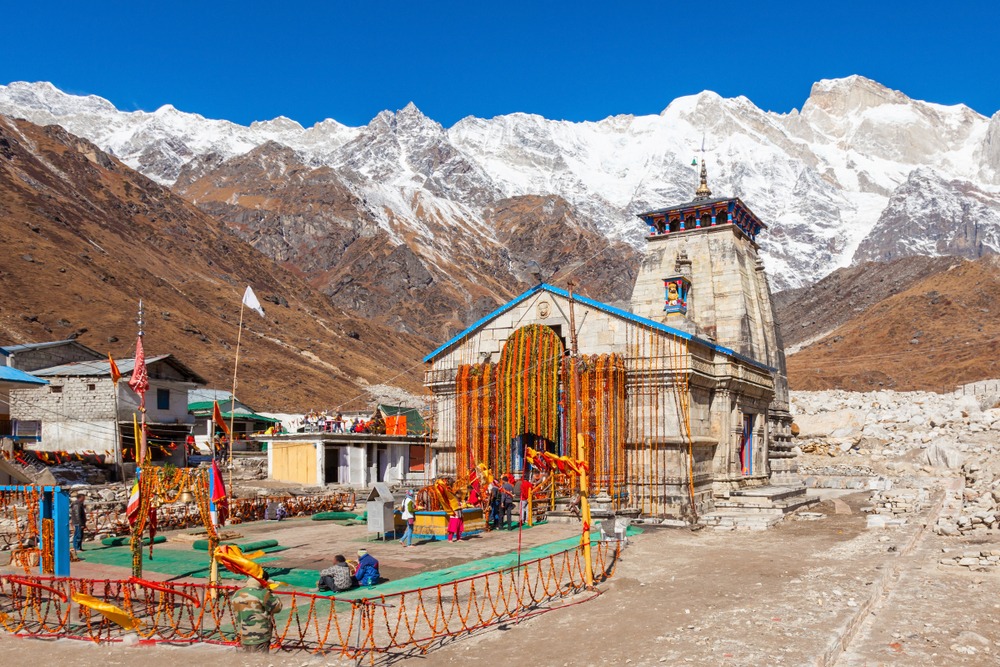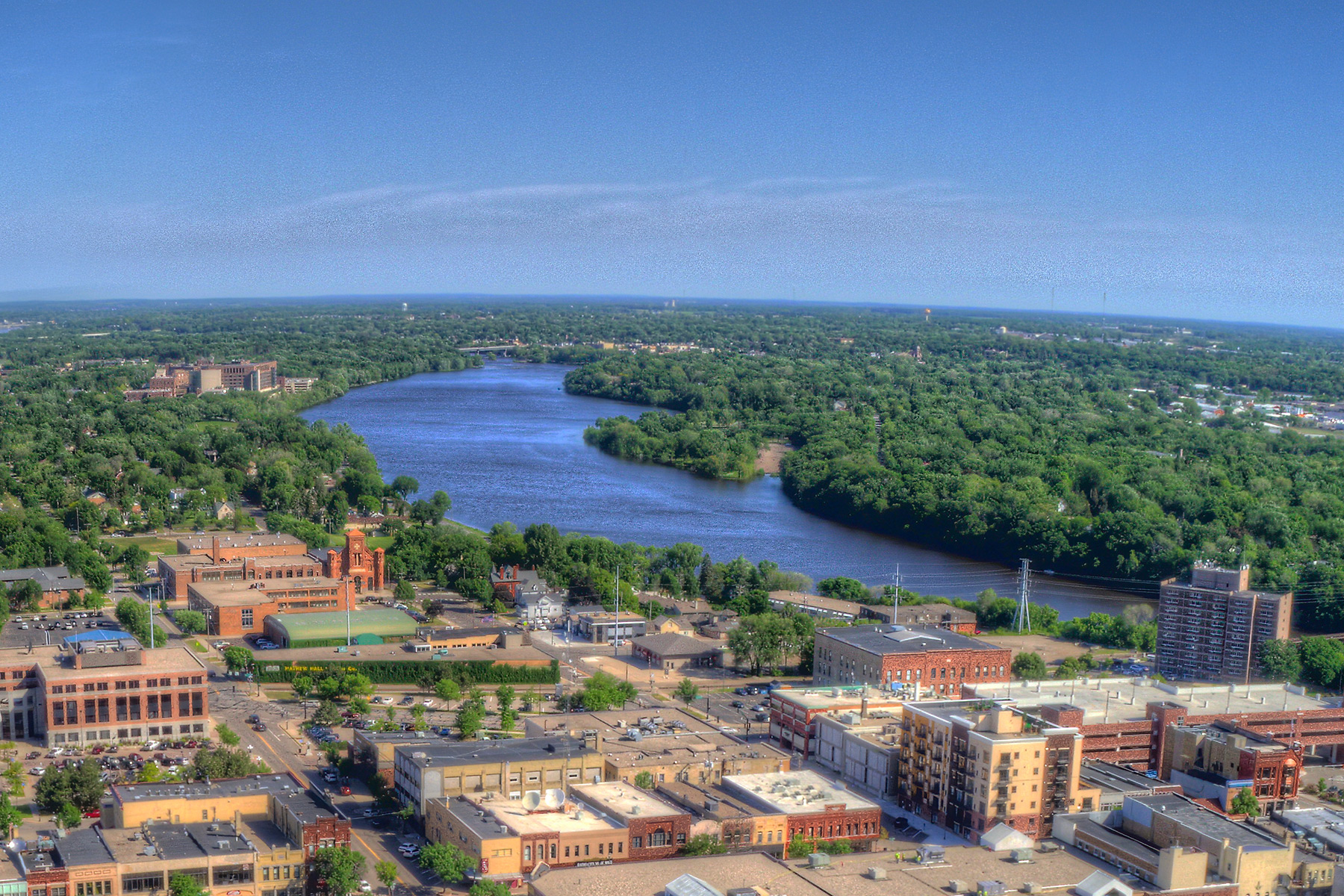Introduction
Allow me to take you on a journey to the Kedarnath Yatra, one of the most renowned and breathtakingly gorgeous pilgrimages in all of India. Nestled high in the Himalayas, Kedarnath is a sacred abode of Lord Shiva and a spiritual haven that attracts thousands of devotees each year. This is a voyage that purifies the soul and draws you nearer to the divine, not just a religious excursion.
The Kedarnath Temple, a significant part of the Char Dham Yatra, stands as a testament to unwavering faith and devotion. Pilgrims from all walks of life undertake this journey, facing physical challenges and braving harsh weather conditions, all for a glimpse of the sacred Jyotirlinga. The very path to Kedarnath is steeped in spirituality, with every step bringing you closer to inner peace and enlightenment.
As you embark on this spiritual quest, you’ll find that the journey is as important as the destination itself. The scenic beauty, the camaraderie among fellow pilgrims, and the overwhelming sense of devotion create an atmosphere of divine energy that is hard to describe in words. It’s an experience that leaves a lasting imprint on your heart and soul.
Historical Significance of Kedarnath
The history of Kedarnath Temple is as old as time itself. Imagine walking in the footsteps of the Pandavas from the Mahabharata, who are believed to have established this temple to atone for their sins after the epic Kurukshetra War. Legends say that Lord Shiva appeared here in the form of a lingam, making this place incredibly holy. Every stone here seems to whisper tales of ancient times and divine intervention.
The temple’s construction is attributed to Adi Shankaracharya, an 8th-century Hindu philosopher and theologian who played a pivotal role in reviving Hinduism in India. It is believed that he restored and renovated the temple, making it a central point of worship for followers of Lord Shiva. The ancient architecture and the serene surroundings transport you back in time, allowing you to connect with the rich spiritual heritage of India.
Kedarnath’s significance is further enhanced by its mention in various Hindu scriptures and texts. The Skanda Purana, for instance, narrates the story of how Lord Shiva evaded the Pandavas and ultimately revealed himself at Kedarnath. Such stories add layers of spiritual depth to the temple, making it not just a place of worship but a repository of divine stories and miracles.
Geographical Setting
Have you ever stood at a place so beautiful that it takes your breath away? That’s Kedarnath for you. Situated 3,583 meters (11,755 feet) above sea level, this holy location is part of Uttarakhand’s Rudraprayag district. Surrounded by towering snow-capped peaks and lush green valleys, with the Mandakini River flowing gracefully by, the sheer beauty of the place fills your heart with peace and awe.
The journey to Kedarnath itself is a visual treat. As you trek through dense forests, across gushing streams, and along rugged mountain paths, every turn reveals a new vista more stunning than the last. The air is crisp and fresh, filled with the scent of pine trees and the sound of chirping birds. The natural beauty of the region acts as a balm for the soul, providing a perfect backdrop for spiritual contemplation.
Beyond only being aesthetically pleasing, Kedarnath’s location adds to its spiritual significance. The temple is situated amidst the Garhwal Himalayan range, which is considered to be the abode of gods. The isolation and serenity of the place make it an ideal spot for meditation and prayer, allowing pilgrims to connect with the divine in a deeply personal way.
Spiritual Significance
Kedarnath isn’t just another destination; it’s one of the twelve Jyotirlingas, where Lord Shiva manifested in a luminous form. The spiritual energy here is palpable, and many believe that a visit to Kedarnath cleanses your sins and grants moksha (liberation). The journey itself, filled with challenges and devotion, is seen as a form of penance, making the spiritual experience even more profound.
The temple’s location, high up in the mountains, symbolizes the spiritual ascent and the quest for higher consciousness. Pilgrims often describe a feeling of being closer to heaven, as if the barriers between the earthly and the divine realms have melted away. The rigorous trek, the thin mountain air, and the stunning surroundings all contribute to a heightened sense of spirituality and devotion.
Many people view the Kedarnath Yatra as a voyage of self-discovery as much as a pilgrimage. The physical challenges of the trek test your endurance and willpower, while the serene and sacred environment encourages introspection and inner peace. It’s a transformative experience that leaves you feeling rejuvenated and spiritually uplifted.
Preparation for the Yatra
Starting the Kedarnath Yatra is a significant undertaking. It requires both physical and mental preparation. You’ll need to be fit, as the trek is quite demanding. The necessities include lots of food and water, warm clothing, supportive gear, and medical supplies. But don’t forget to prepare mentally, too. This is a spiritual quest requiring inner strength and resilience, not just a physical one. If you’re planning a pilgrimage to Kedarnath Yatra and need reliable travel services, I highly recommend The Searching Souls. They offer comprehensive packages that include transportation, accommodation, and guided tours, ensuring a hassle-free and spiritually enriching journey.
It’s imperative that you acclimate to the high altitudes and difficult terrain before beginning your trek. Regular exercise, including cardiovascular workouts and strength training, can help build the stamina needed for the trek. Additionally, practicing yoga and meditation can enhance your mental resilience and prepare you for the spiritual aspects of the journey.
Planning your trip far in advance is essential. Research the best routes, check the weather conditions, and make sure you have all the necessary permits and documents. Packing smartly is crucial – prioritize lightweight, warm clothing, waterproof gear, and high-energy snacks. Carrying a first aid kit and any personal medications is also a must.
Journey to Kedarnath
There’s more than one way to reach Kedarnath, each offering its own unique experience. The most popular route starts from Gaurikund, where you can trek or hire ponies and palanquins. If you’re short on time or want a bird’s-eye view of the stunning landscape, helicopter services are available from Phata, Sersi, and Guptkashi. Whichever way you choose, the journey is as enriching as the destination.
The trek from Gaurikund to Kedarnath is about 16 kilometers and can take anywhere from 6 to 10 hours, depending on your pace and the weather conditions. With breath-taking views of the Himalayas, the landscape radically changes as you rise, changing from thick woods to rocky terrain. Each step brings you closer to the divine, and the camaraderie among fellow pilgrims adds to the experience.
You will be treated to a panoramic view of the breathtaking Himalayan environment if you choose to take the helicopter flight. The brief flight provides a distinctive viewpoint of the majesty of the peaks and the verdant valleys below. It’s a convenient option for those who may not be able to undertake the trek but still wish to experience the spiritual energy of Kedarnath.
Key Stops Along the Way
As you make your way to Kedarnath, there are several must-visit stops that add to the spiritual experience:
- Gaurikund: This is where the journey begins. Known for its hot springs and the Gauri Temple dedicated to Goddess Parvati, Gaurikund sets the tone for the pilgrimage.
- Sonprayag: A charming settlement at the confluence of the Mandakini and Basuki rivers. The serene beauty and spiritual ambiance make it a perfect stop.
- Triyuginarayan Temple: Romance is added to the spiritual path by the belief that Lord Shiva and Goddess Parvati were married at this temple.
Gaurikund is not merely a starting point; it is a place of profound spiritual significance. The hot springs here are believed to have healing properties, and a dip in these waters is considered purifying. The Gauri Temple, dedicated to Goddess Parvati, offers a serene space for prayer and reflection, helping pilgrims prepare mentally and spiritually for the journey ahead.
Sonprayag is a spot to stop and observe the surroundings because of its breathtaking natural beauty. The confluence of the Mandakini and Basuki rivers is a sight to behold, and the tranquility of the village offers a respite from the rigors of the trek. Many pilgrims take a moment here to meditate and connect with the divine.
Triyuginarayan Temple, located near Kedarnath, adds a historical and romantic dimension to the pilgrimage. The temple is believed to be the site where Lord Shiva and Goddess Parvati were married, and it features an eternal flame that has been burning since their wedding. Visiting this temple adds another layer of spiritual significance to the journey.
Experiencing Kedarnath
Upon reaching Kedarnath, the first thing that hits you is the sheer majesty of the place. Encircled by majestic mountains, the shrine emanates a mystical aura. Participating in rituals like the Abhishekam (bathing the lingam) and the Aarti (ceremonial worship with lights) fills you with a sense of peace and reverence. It is an experience that you will always remember.
The sight of the Kedarnath Temple against the backdrop of snow-capped peaks is a sight to behold. The temple’s simplicity and strength, built with massive stone slabs, resonate with the timelessness of the divine. As you step into the temple complex, you can feel the spiritual energy that has been nurtured here for centuries.
The rituals performed at Kedarnath are deeply symbolic and spiritually enriching. The Abhishekam, where the lingam is bathed with water, milk, and other offerings, is a powerful act of devotion. The evening Aarti, with its rhythmic chants and flickering lamps, creates an atmosphere of pure divinity. Participating in these rituals provides a profound sense of connection with Lord Shiva.
The Kedarnath Temple
The temple is a stunning example of archaic architecture in and of itself. Built with massive stone slabs, it stands resilient amidst the harsh Himalayan conditions. Inside, the main lingam of Lord Shiva is the focal point of devotion, while the outer complex features statues of Nandi, the bull, and other deities. The temple’s resilience and beauty are a testament to its divine significance.
The architecture of the Kedarnath Temple is both functional and symbolic. The use of large, interlocking stone slabs ensures the temple’s stability in the face of natural calamities, while the temple’s design reflects the traditional Nagara style of architecture. A sense of heavenly presence and eternal quality is evoked by the structure’s power and simplicity.
Inside the temple, the main lingam is worshipped with great devotion. Pilgrims offer prayers, flowers, and other offerings, seeking blessings from Lord Shiva. The statues of Nandi and other deities in the outer complex add to the spiritual ambiance, creating a sacred space that invites introspection and prayer. The temple’s sanctity is palpable, making it a place of profound spiritual significance.
Accommodation and Facilities
Worried about where to stay? Don’t be. Kedarnath offers a range of accommodations from budget lodges to more comfortable guest houses. While facilities are basic, they provide the warmth and comfort needed after a long journey. Food stalls, medical aid, and security are available, ensuring that your stay is safe and comfortable.
The majority of Kedarnath’s lodging options are made with pilgrims’ needs in mind. While they may not offer luxurious amenities, they provide clean and comfortable spaces to rest and recuperate. From simple guest houses to government-run lodges, there are options to suit different budgets and preferences.
Food stalls and small eateries offer a variety of local and vegetarian dishes to keep you nourished during your stay. It’s advisable to carry some high-energy snacks and bottled water, especially if you have dietary restrictions. Medical aid is available in case of emergencies, with basic healthcare facilities to address common ailments and injuries.
Cultural Aspects
Kedarnath is a cultural gem in addition to a center of spirituality. Kedarnath’s indigenous culture combines spirituality with the customs of the Himalayas. There is a strong spiritual foundation to the regional traditions and customs. Festivals, especially during the Char Dham Yatra season, bring the place alive with vibrant colors and religious fervor. Being a part of these celebrations offers a deeper connection to the local culture and spiritual essence.
The local culture in Kedarnath is a blend of spirituality and traditional Himalayan lifestyle. The residents, known for their warmth and hospitality, play a significant role in preserving the cultural heritage of the region. Their daily lives are intertwined with religious practices and customs, offering a unique insight into the spiritual fabric of Kedarnath.
Festivals in Kedarnath are celebrated with great enthusiasm and devotion. The Char Dham Yatra season, in particular, sees a flurry of religious activities, including temple festivals, fairs, and cultural performances. Participating in these events provides a deeper understanding of the local traditions and the spiritual significance of the region.
Challenges Faced by Pilgrims
The journey to Kedarnath is challenging, but that’s what makes it special. With abrupt temperature drops and snowfall, the weather can be erratic. It’s a physically demanding hike that will test your endurance and faith. But overcoming these challenges is part of the spiritual journey, making the experience all the more rewarding.
The weather is one of the largest obstacles because it can change drastically and quickly. Sudden snowstorms, heavy rains, and extreme cold are common, requiring pilgrims to be well-prepared and resilient. Proper clothing, gear, and a flexible itinerary can help mitigate these challenges and ensure a safer journey.
Another major obstacle to the walk is its physical demands. The steep, rocky paths, high altitudes, and thin air can be tough on the body, especially for those not accustomed to such conditions. However, these physical challenges are seen as a form of penance, strengthening your resolve and deepening your spiritual commitment.
Environmental Conservation Efforts
With the increasing number of pilgrims, preserving Kedarnath’s pristine environment has become crucial. There are significant efforts to promote sustainable tourism. Government initiatives focus on waste management and afforestation. As pilgrims, it’s our duty to respect nature by minimizing our ecological footprint and adhering to guidelines aimed at protecting this sacred environment.
Environmental conservation efforts in Kedarnath are essential to maintaining its natural beauty and spiritual sanctity. The government has implemented several measures to manage waste, promote recycling, and reduce pollution. Pilgrims are encouraged to use eco-friendly products and dispose of waste responsibly, ensuring that the fragile ecosystem remains intact.
Afforestation and reforestation projects are also underway to restore the natural habitat and prevent soil erosion. These efforts help protect the region’s biodiversity and maintain the ecological balance. As pilgrims, supporting these initiatives and practicing sustainable tourism can make a significant difference in preserving Kedarnath’s pristine environment.
Personal Experiences
I’ve heard countless stories from fellow pilgrims who describe their Kedarnath Yatra as life-changing. Overcoming physical hardships, finding inner peace, and experiencing a profound sense of divine presence are common themes. These personal anecdotes highlight the deep spiritual impact of the pilgrimage, making it clear why Kedarnath is considered a spiritual haven.
Many pilgrims share stories of personal transformation and spiritual awakening. The journey to Kedarnath, with its physical challenges and spiritual rewards, often leads to a deeper understanding of oneself and the divine. The journey is enhanced by these personal experiences, which give it a genuine and inspirational quality.
Hearing these stories can be incredibly motivating, especially for first-time pilgrims. Knowing that others have faced and overcome similar challenges can provide the encouragement and determination needed to complete the journey. The pilgrims’ common faith and life experiences foster a sense of camaraderie and unity that enriches the spiritual voyage.
Conclusion
The Kedarnath Yatra is not just a pilgrimage; it is a journey of faith, tenacity, and spiritual revelation. The sacred temple, set amidst the majestic Himalayas, offers an unparalleled sense of peace and divinity. Many people find that their journey to Kedarnath is a life-changing event that gives them a close-up view of the divine and a stronger bond with the spiritual core of Hinduism.
FAQs
1. Best time to visit Kedarnath? Between May and October, when the weather is generally moderate and the temple is accessible to pilgrims, is the ideal time to visit Kedarnath.
2. How to reach Kedarnath from major cities? Road travel is available to Kedarnath from Haridwar, Rishikesh, and Dehradun. To get to the temple from Gaurikund, one can hike or take a helicopter.
3. What are the accommodation options? Accommodation options range from budget lodges and guest houses to more comfortable hotels and government-run guest accommodations.
4. Are there any medical facilities available? Yes, basic medical facilities are available in Kedarnath and along the trek route. Pilgrims are advised to carry personal medication and first aid kits.
5. What are the nearby attractions? Nearby attractions include Triyuginarayan Temple, Vasuki Tal Lake, and the Bhairavnath Temple, each offering unique spiritual and natural experiences.




